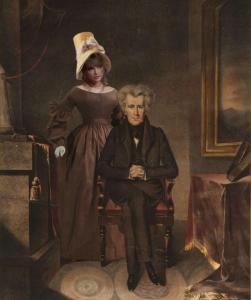On Jan. 20, Joe Biden was sworn into office as the 46th president of the United States. But before we could even finish wiping our tears at Amanda Gorman’s magnificent recitation of “The Hill We Climb,” mountains of black folders began piling up on Biden’s desk in the Oval Office.
Contrary to popular belief, those folders were not filled with executive orders to make Ray Bans the national sunglasses or chocolate chip ice cream the national food. They were, in fact, orders to change the trajectory of the nation.
NPR wrote that “just after about 5 p.m., president Biden made his way to the Oval Office, where he started to sign a big stack of executive actions, saying there was no time to start like today.”
Biden signed a total of 11 orders on his first day at the White House and has already signed 42 executive actions as of this week. When looking at previous presidents, he has passed the number of executive actions signed in the first few weeks by a landslide. But why?
Perhaps it’s the ever-pressing threat of climate change? Or the racial injustice across the country? Or the worldwide pandemic? The world is divided more than it’s ever been, so it’s fitting that the number of Biden’s executive actions are record-breaking.
The executive actions cover a multitude of issues in the country, including the pandemic, racism, LGBTQ+ rights, the economy and climate change.
Here are a few key executive actions to help you better understand what changes are being made on the hill:
‘Executive Order on Tackling the Climate Crisis at Home and Abroad’
This executive action is aimed at refocusing the issues of America on climate change. On top of many other attributes, it will limit the invasion of public lands and offshore waters for gas and oil.
‘Executive Order on Preventing and Combating Discrimination on the Basis of Gender Identity or Sexual Orientation.’
Workplace discrimination based on sexual orientation or gender identity is prevented through the workings of this executive action.
‘Executive Order on a Sustainable Public Health Supply Chain.’
This executive action works to accelerate the speed at which the manufacturing and delivery of COVID-19 vaccinations take place.
The aforementioned executive orders include proclamations and memorandums, which are essentially different versions of directives from the president. But before we start blending all of these terms in our minds like a smoothie bowl, let’s figure out the distinctions between the trio.
According to the American Bar Association, an executive order is a signed, written, published and numbered directive from the president. While proclamations and memorandums are also directives, they are different in what the directive itself is managing.
Executive orders manage operations of the federal government; proclamations manage information on holidays, commemorations, federal observances and trade; and memorandums are used to organize administrative matters of the federal government.
You may find yourself asking “What are the operations of the federal government and how are they remotely different from the administrative matters?”
Let’s break it down with examples of President Biden’s directives:
On day one in office, Biden signed an executive order to rejoin The Paris Agreement on climate change due to the fact that environmental issues are considered “operations” of the federal government.
He also signed a proclamation that pulled funds from the border wall as it directly impacts trade. One of the memorandums President Biden signed on his first day in office was one that affirmed Deferred Action for Childhood Arrivals (DACA), as it deals heavily with the Administrative Procedure Act (APA). Basically, the titles of the president’s directives depend on what those particular orders pertain to.
Though, the question many people find themselves asking is, “What’s next?” Sure, these executive orders are a great start, but how will they fix or even attempt to fix such a divided country?
The good news is that these orders, once signed, are law. They serve as a foundation for which our country can grow. Of course, they are not the end-all-be-all of the country and are truly just the beginning of this administration’s work. However, these orders provide a fundamental function in showing the American people what the current administration’s goals are. If you’re interested in learning more about these executive actions, visit this link.




